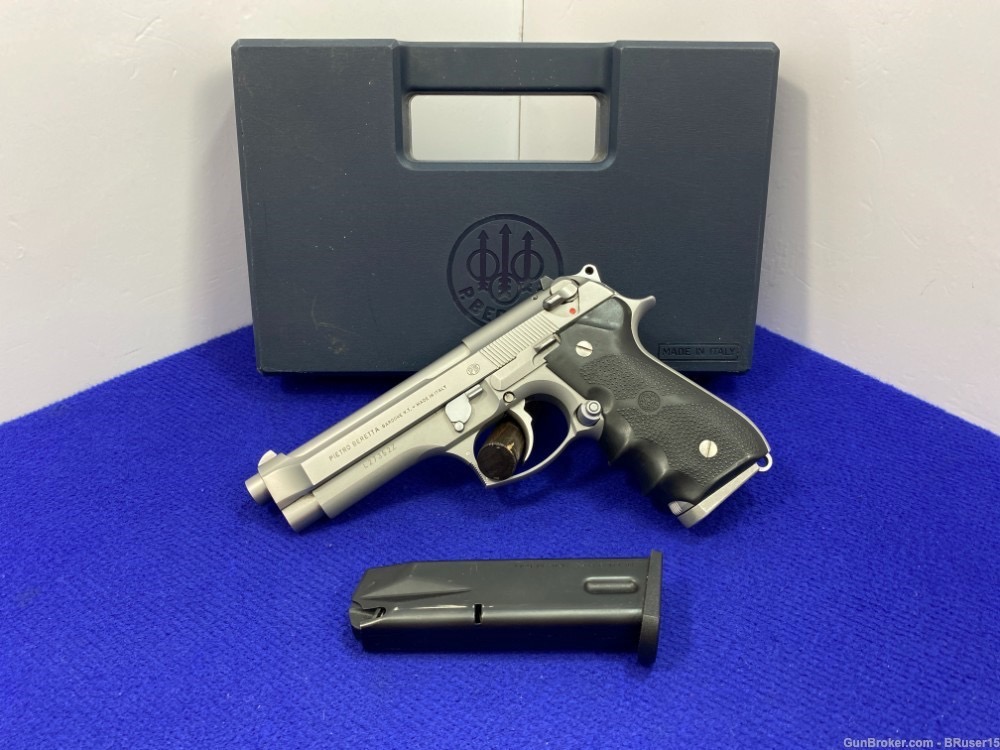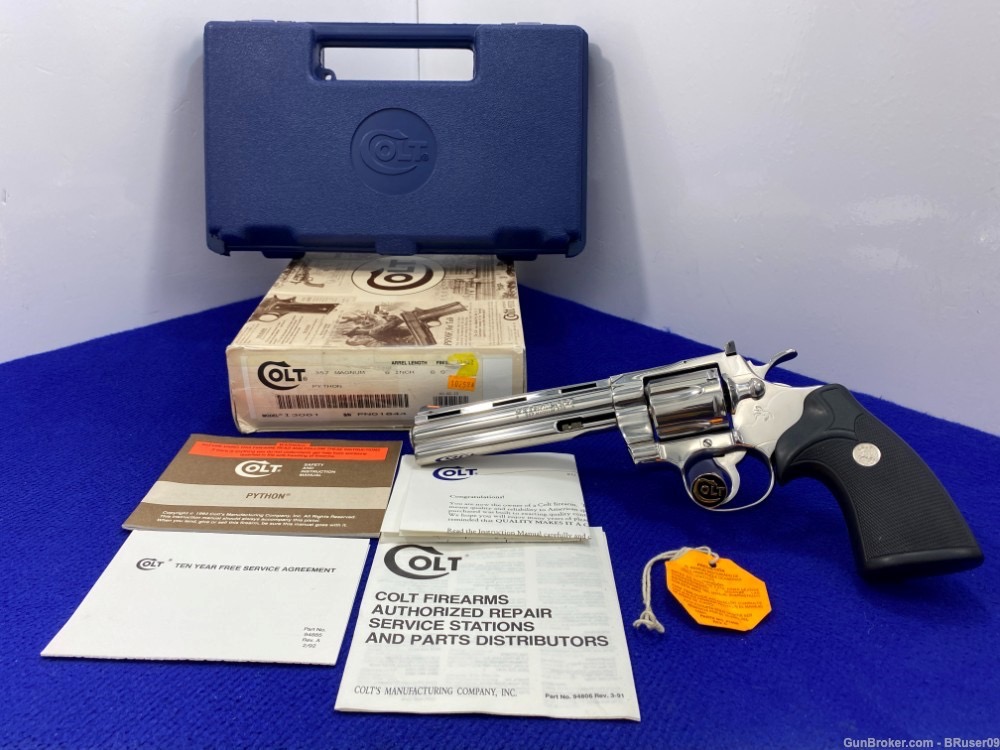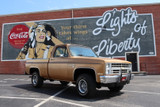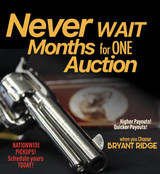Sunday Showcase Recap
Recap on The 8/4 Sunday Showcase


The Smith & Wesson Model 032 is a unique and rare double-action-only revolver chambered in both .32 H&R Magnum and .32 S&W. Built on an alloy J-frame with three screws, it features a 2-inch steel barrel marked with "Airweight" and "32 MAGNUM." This revolver has a 6-shot fluted steel cylinder with a nominal length of 1.4 inches and a fully concealed hammer, enhancing its suitability for concealed carry. The round butt JA frame is equipped with Uncle Mike's Combat grips, providing a comfortable and secure hold. The Model 032 typically comes in a flat or matte blue finish, though a scarce polished blue finish variant exists. The revolver features a .312-inch smooth trigger, a serrated ramp front sight, and a square notch rear sight for improved aiming precision. The serial number is laser etched under the top strap, and the revolver is marked "MOD. 032" with a contoured thumb piece. This model was produced in limited quantities, with only about 180 units shipped in a one-piece cardboard S&W blue box #3392, making it a collector's item. Not cataloged and produced only in 1992, the Model 032 is believed to be cosmetically imperfect Model 632s with a blue finish, as "632" can be found in some yoke cuts. It shares similarities with the Model 332, adding to its historical and collectible significance.


The Beretta 92FS Inox stands as an emblem of precision and elegance in the world of firearms. Crafted with Italian mastery, its stainless steel construction offers durability and a timeless allure. Boasting a sleek design, it features a distinctive slide-mounted safety/decocker, ensuring both convenience and safety in handling. Renowned for its exceptional accuracy and reliability, the 92FS Inox has earned its place as a favorite among shooters, whether for professional duty or recreational use. With its smooth action and comfortable grip, it delivers a shooting experience that is both refined and dependable, embodying the pinnacle of Beretta's craftsmanship and innovation.


Smith & Wesson’s dominance in the .357 Mag. market changed forever in 1955, when Colt introduced its first revolver chambered in .357 Mag: the Python. By all accounts, this was also considered by Colt executives to be the finest revolver the company produced at the time. No expense was spared in the manufacturing process, from the revolver’s timing and lock-up to its Royal Blue finish, this would be the pinnacle of Colt’s manufacturing prowess and remains—to this day—one of the finest revolvers ever made, no matter the caliber. Originally, it was introduced in Colt’s spectacular Royal Blue finish with a 6-inch-barrel length. Most folks will tell you that a vent rib on a gun barrel is for heat dispensation so you can maintain accuracy without being thrown off by the wiggly, mirage-like blurriness caused by excessive heat rising off the barrel. That all makes sense, but the designer of the Python, Al Gunther, stated that the vents were primarily there to reduce the gun's weight. The gun originally had a hollow barrel lug also to reduce weight, but it still came in at 43 ounces. Eventually, the barrel lugs were made solid to add weight to the gun at the barrel end.
Subsequently, the Python was offered in 2.5-, 3-, 4-, 6- and 8-inch barrel lengths, and some 8-inch Pythons came factory equipped with a hunting scope, making the Python the first revolver to be equipped—out of the box—ready for hunting. The incorporation of Colt Accro and Elliason rear sights allowed the gun to be zeroed for both windage and elevation. The oil-finished, checkered American walnut grips with the gold Colt medallion rounded out the presentation that came with a whopping $125 price tag—almost double the MSRP of Colt’s Trooper model. Demands were made for other finishes besides Royal Blue, so over the years, Colt offered the Python in Bright Nickel, satin electroless nickel known as "Coltguard," and in the early 1980s in satin stainless steel, and in bright mirror polished stainless steel, variously known as Bright Polish or Ultimate Polish. Between 1955, when it was introduced, and 1997, when production ceased for the first-generation Python, more than 750,000 were produced.


Smith & Wesson’s dominance in the .357 Mag. market changed forever in 1955; however, when Colt introduced its first revolver chambered in .357 Mag.: the Python. By all accounts, Colt executives also considered this to be the finest revolver the company produced at the time. No expense was spared in the manufacturing process, from the revolver’s timing and lock-up to its Royal Blue finish, this would be the pinnacle of Colt’s manufacturing prowess and remains—to this day—one of the finest revolvers ever made, no matter the caliber.
Originally, it was introduced in Colt’s spectacular Royal Blue finish with a 6-inch-barrel length. Most folks will tell you that a vent rib on a gun barrel is for heat dispensation to maintain accuracy without being thrown off by the wiggly, mirage-like blurriness caused by excessive heat rising off the barrel. That all makes sense, but the designer of the Python, Al Gunther, stated that the vents were primarily there to reduce the gun's weight. The gun originally had a hollow barrel lug also to reduce weight, but it still came in at 43 ounces. Eventually, the barrel lugs were made solid to add weight to the gun at the barrel end.
Subsequently, the Python was offered in 2.5-, 3-, 4-, 6- and 8-inch barrel lengths, and some 8-inch Pythons came factory equipped with a hunting scope, making the Python the first revolver to be equipped—out of the box—ready for hunting. The incorporation of Colt Accro and Elliason rear sights allowed the gun to be zeroed for both windage and elevation. The oil-finished, checkered American walnut grips with the gold Colt medallion rounded out the presentation that came with a whopping $125 price tag—almost double the MSRP of Colt’s Trooper model. Demands were made for other finishes besides Royal Blue, so over the years, Colt offered the Python in Bright Nickel, satin electroless nickel known as "Coltguard," and in the early 1980s in satin stainless steel, and bright mirror polished stainless steel, variously known as Bright Polish or Ultimate Polish. Between 1955, when it was introduced, and 1997, when production ceased for the first-generation Python, more than 750,000 were produced.
Recent Posts
-
Museum-grade 1985 Chevrolet K10 4x4 SWB Outdoorsman
Hey, Squarebody Fans! Prepare for a jaw-dropping throwback at the Winchester Collectors Arms Show …Sep 4th 2025 -
Why You Should Consign Your Firearms with Bryant Ridge Co.
Why You Should Consign Your Firearms with Bryant Ridge Co.The Smart Choice for Your Guns! If you’r …Sep 4th 2025 -
Bryant Ridge's Featured Firearm of the Week: The King Ranch Cowboy's Dream!
Bryant Ridge's Featured Firearm of the Week: The King Ranch Cowboy's Dream! Get ready for a t …Sep 4th 2025



